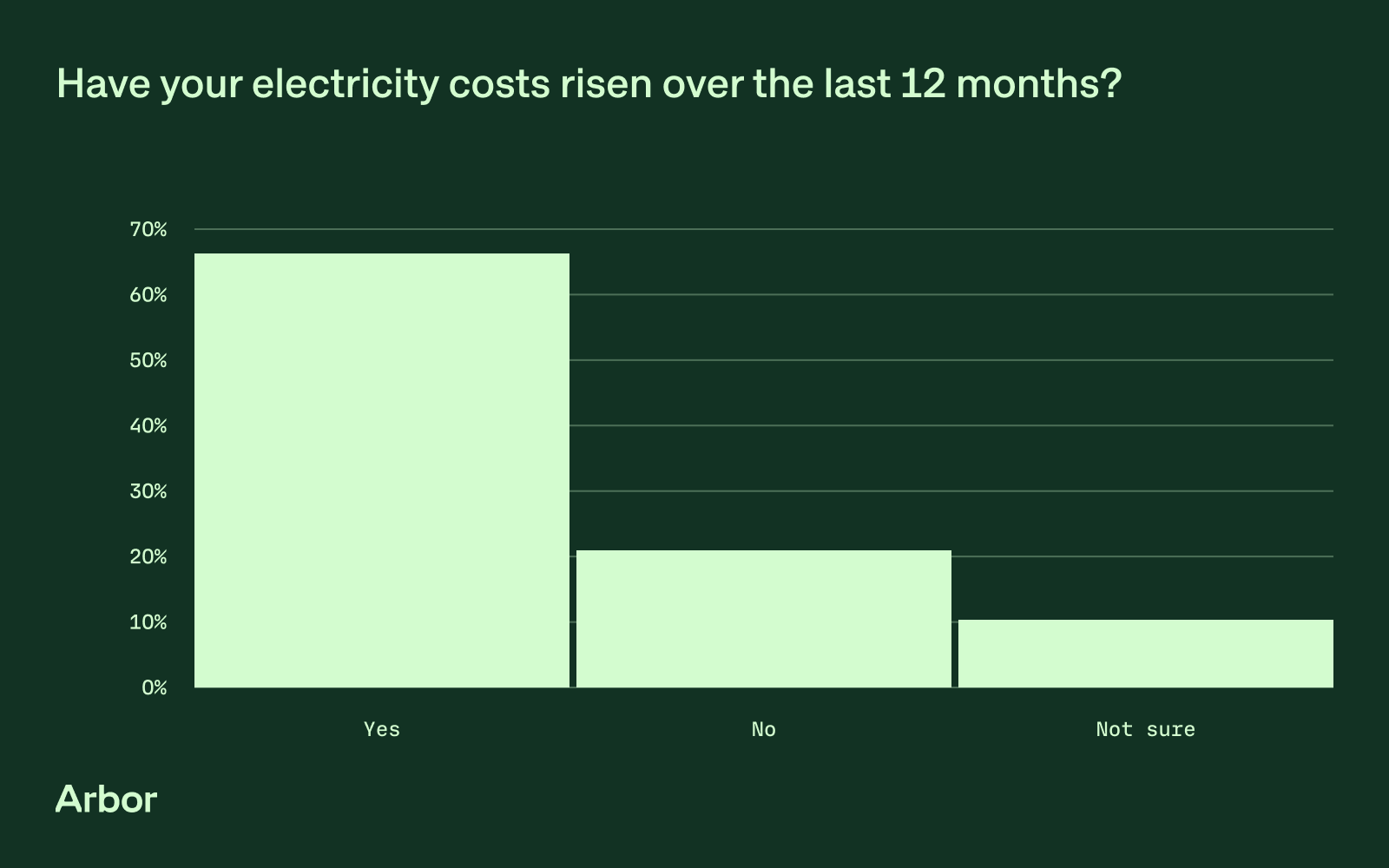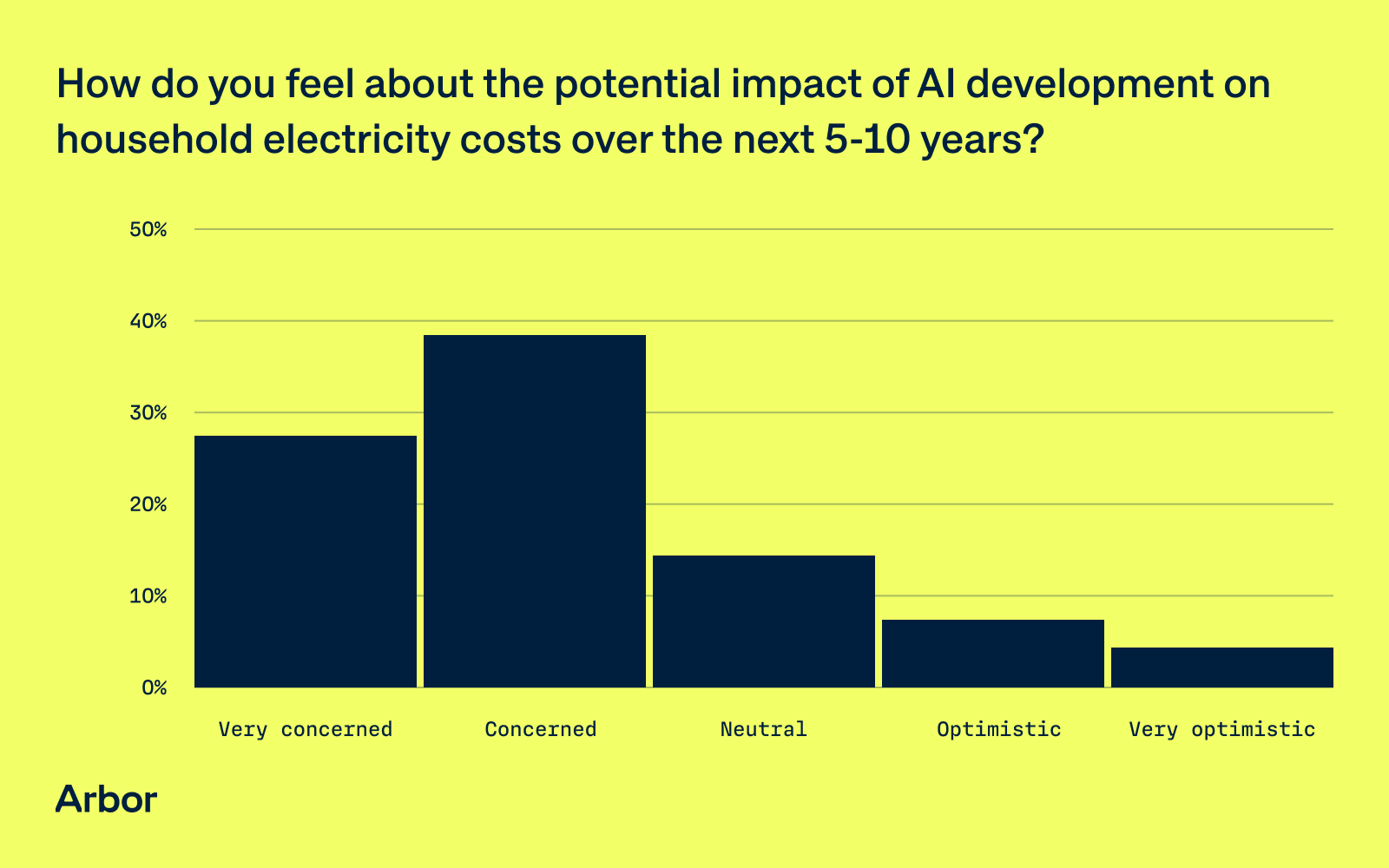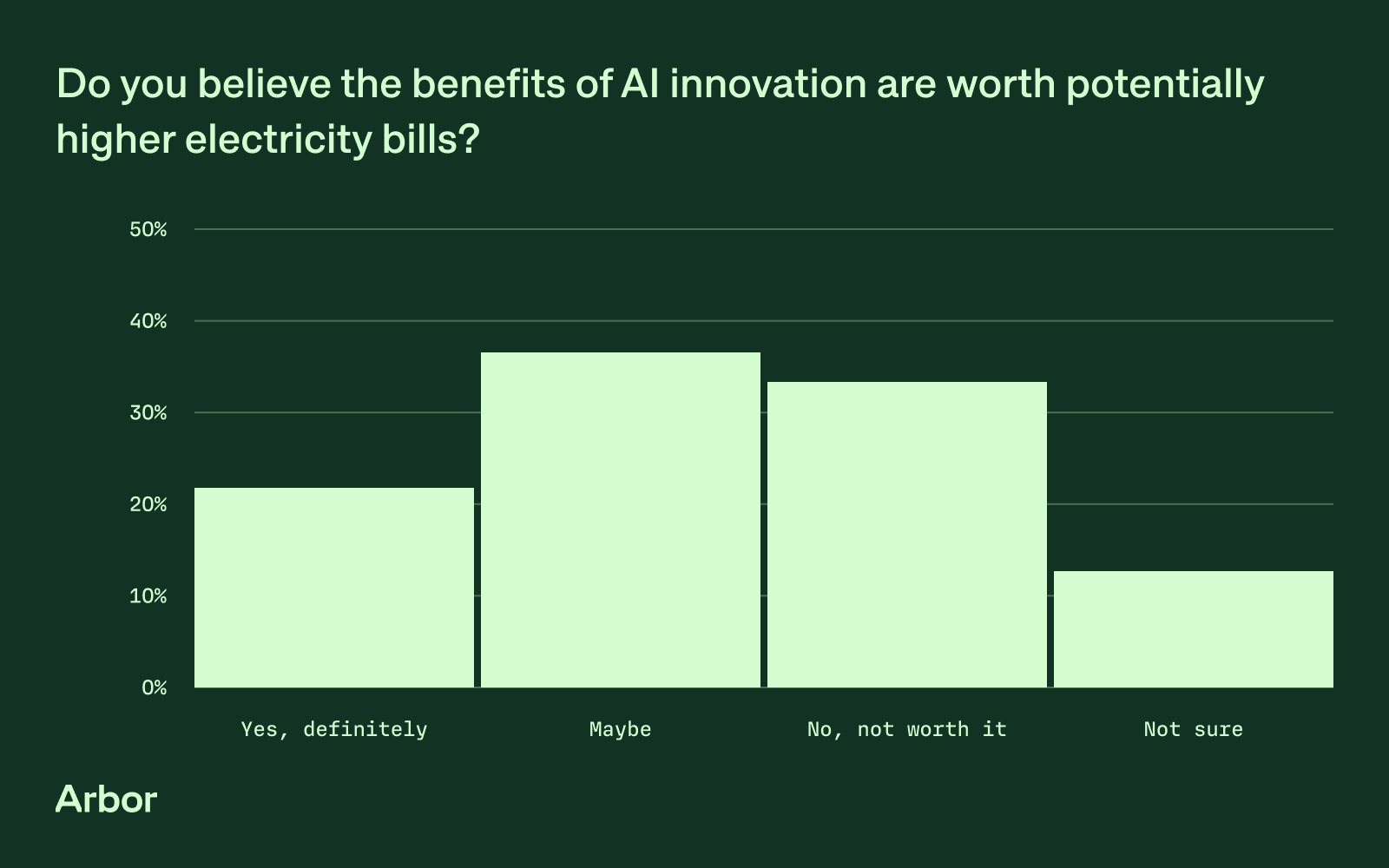Americans Fear an ‘AI Power Tax’: New Survey Reveals Rising Concern Over AI’s Energy Costs
AI’s explosive growth has been everywhere in the headlines this year, often framed as the future of work, innovation, risk and economic growth. Stories about massive data centers and skyrocketing electricity demand have also become regular fixtures in the news. But beyond the headlines, how do everyday Americans actually experience rising bills, and how much do they believe AI is to blame?
To get a clearer picture, we fielded a nationwide survey of more than 1,400 U.S. households through SurveyMonkey using a census-balanced sample. With a large, diverse respondent pool, the survey provides statistically meaningful insights for both national and regional trends. We asked families how they’re experiencing rising energy costs and whether they connect those changes to AI. The results show that households are feeling burdened by higher bills, quick to blame AI for the rise, and looking for solutions that don’t leave them carrying the cost alone.
Key findings at a glance:
- 7 in 10 households say they’ve seen their electricity costs rise over the past year.
- 71% say they can’t afford more than a $20 monthly increase, and 1 in 5 wouldn’t tolerate any increase.
- Nearly two-thirds believe AI is already driving up their electricity costs, and nearly 70% overestimate its actual energy use.
- Nearly two-thirds are concerned about AI’s future impact on energy costs.
- Only 1 in 5 believe the benefits of AI justify those higher bills.
- Middle-aged households (30–44) are most impacted and most concerned about AI’s role in rising energy costs.
- 52% would support AI growth if powered by clean energy.
Households are at a breaking point
For most Americans, electricity is a lifeline. But that lifeline is getting harder to afford.
- 7 in 10 households saw their electricity costs rise over the past year.
- 72% of Americans say they can’t tolerate more than a $20 increase each month.
- 1 in 5 households wouldn’t tolerate any increase at all.
Faced with a $50 monthly spike, 25% said they’d cut dining out and entertainment, 16% groceries, and 15% travel—showing families are prepared to cut essentials, not just luxuries. Only 9% say a $50 monthly increase would have no impact on their household budgets.

AI is getting blamed
61% say AI is already having a very or somewhat significant impact on their bills, and over two-thirds are concerned about AI’s future impact on energy costs. In New England, 70% blame AI—the highest in the country. And 70% overestimate how much power AI uses today, showing that while people are aware of the issue, there’s still confusion about the actual scale.

The truth is that the location of a data center near your home doesn’t directly change the price on your bill. Power markets don’t work like water pipes, electricity flows across regional grids, and costs are shared across a wide area.
However, as AI data centers multiply, they are dramatically increasing overall demand. That demand pushes up the wholesale costs that utilities pay for electricity. Those higher system-wide costs are then passed down to households, even if your personal energy use hasn’t changed.
The ‘AI Power Tax’
Americans are experiencing AI’s growth as an ‘AI power tax’—a hidden cost on households they feel powerless to avoid. The growth overall is staggering:
- In 2025 alone, U.S. tech companies will spend $300–400 billion on AI infrastructure. That’s more than the Apollo program (inflation-adjusted), but compressed into a single year instead of a decade.
- Data center energy demand is projected to grow from 4.4% of U.S. electricity use in 2023 to 12% by 2030.
- Since January 2021, residential electricity prices are up nearly 40% nationwide.
- In PJM (the regional grid covering 13 states and D.C.) capacity prices, which reflect the cost of ensuring reliability, have spiked 11x in just two years. Analysts estimate two-thirds of that increase comes directly from data centers.
For the 65 million residents of PJM, that’s an additional $9.3 billion this year alone, equivalent to an increase of $10–$21 per household each month. If current trends continue, Americans could be facing $15–30 billion annually in added costs by 2027.
Most don’t think AI is worth these higher bills
According to the survey responses, Americans aren’t sold on the idea that AI innovation is worth these higher electricity bills. Only 1 in 5 believe the benefits of AI justify those higher bills.

This skepticism cuts across the country, but it’s especially strong among middle-aged households, who report the steepest cost increases and the greatest concern about AI’s role.
Households feel powerless to drive change
Households’ first instinct is belt-tightening, not advocacy: 42% would cut back usage at home, 31% reduce other spending, 21% make energy upgrades, and just 9% would advocate for policy change.This gap highlights a potential key issue: bill payers seeing their options as personal sacrifice, not systemic change. While corporations and regulators influence the market, individual households are left to manage the fallout alone.
Who should pay? Americans want renewable energy and corporate accountability
Americans overwhelmingly say responsibility belongs with institutions, not individuals: 35% tech companies, 30% government, 25% utilities, and just 8% consumers.
Just over half of respondents see a potential path forward: they would support AI growth if it were powered entirely by renewable energy.
Higher bills mean hard choices at home
AI promises incredible advancements, but without careful planning, there is a risk that consumers will perceive an “AI power tax”. When asked what they would do if faced with a significant increase in energy costs, consumers painted a stark picture of sacrifice and strain:
- 42% of households said they would cut back on electricity use at home
- 31% would reduce spending in other areas of their budget
Our mission at Arbor is to help you navigate this changing landscape. By connecting households to better electricity rates and advocating for greater transparency, we believe innovation and keeping the lights on don’t have to come at the expense of affordability.

